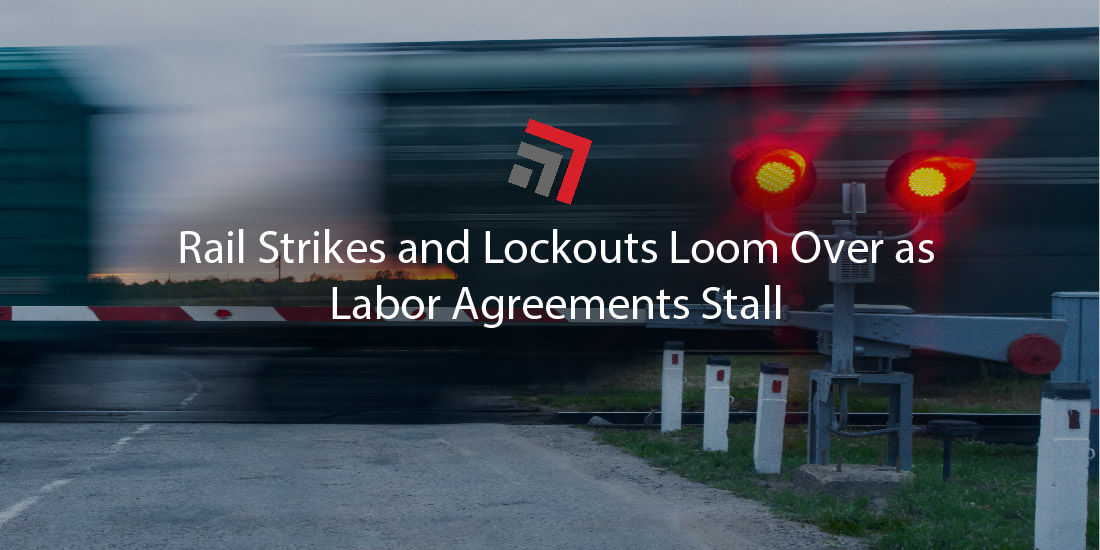The advent of December is best associated with holiday hearth. Freeform will kickoff its usual “25 Days of Christmas” movie specials, tacky lawn ornaments will magically appear around the neighborhood, and the sounds of holiday music will fill every room across the country.
Unfortunately, it’s hard for the rail industry to get in on this usual holiday glee. The early days of December bring along a different and more stern meaning for this tormented sector of freight.
The possibility of a strike or railroad lockout could occur in the coming weeks as rail unions and freight railroads have yet to reach a labor agreement that satisfies all parties involved.
A tentative agreement was reached in September
Of course, we were all optimistic back in September. With the brokerage of the Biden Administration, the 12 rail unions and railroads reached tentative labor agreements in the twilight hours before a critical deadline.
Much like a game-winning Hail Mary or a walk-off homerun, the unions and railroads—long at an impasse—finally had a breakthrough in their negotiations when rail service needed it the most.
The thought at the time was that the stalling talks, beginning in January 2020, for satisfactory agreements concluded. Stakeholders felt assured that threats of a nationwide stoppage or rail strike had been averted and the rail industry, reinvigorated with a new deal, could move on from this hurdle in its pursuit to improve service.
However, we are now a couple days away from December and without a formal deal. What exactly happened?
Eight unions have ratified, but four remain negotiating
A key word needs to be stressed. The September agreement was tentative. This means each of the 12 rail unions still has to ratify, or give consent to, the labor deal. That said, whether to ratify or not became the question for each respective union and its members (rail employees).
Since September, of the 12 unions, members from eight of them voted in favor of ratifying their labor agreements. Four unions have not ratified:
- Brotherhood of Maintenance of Way-Employes Division (BMWED)
- Brotherhood of Railroad Signalmen (BRS)
- International Brotherhood of Boilermakers (IBB)
- Transportation Division of the International Association of Sheet Metal, Air, Rail, and Transportation Workers (SMART-TD). SMART-TD
With the above unions rejecting ratification of their agreements, the four parties have been back at the bargaining table with the railroads.
Within the time from the tentative deal to now, these remaining unions, their members, and freight railroads are not allowed to engage in any strikes or work lockouts per the Railway Labor Act.
However, the status quo upheld by this law can only go on for so long. This time when neither party can take action is called a “cooling-off period” and it will end for the four unions on December 8.
Following that, the remaining unions may strike and the railroads may take corrective action.
What’s been the roadblock with reaching an agreement?
At first glance, many likely ask, if eight of the 12 unions approved of their agreements, how come four of them have been opposed to their respective offerings. Sure, each union represents a different workforce in rail, but what exactly has been the deal breaker that has dragged on their refusal to ratify?
Well, sick leave appears to be one their biggest gripes. Union members, including those with unions who’ve already ratified agreements, believe sick leave policies should grant them more leeway to respond immediately to pressing individual or family needs.
Some union members mentioned their sick leave benefits are delayed after the fact for days and attendance policies discourage them from using vacation leave in lieu of sick leave.
On the other side, representatives with the freight railroads contest the union members do have leave benefits. They also mention the Biden Administration’s emergency board recommendations where there is no advisal for an extensive response to sick leave policy.
In the eyes of freight railroads, the recommendations, as well as the mediation in September, from the Biden Administration has ushered in suitable terms for an agreement. They do not think now is a good time to introduce or resurface demands at the bargaining table.
Final Thoughts
Meanwhile, stakeholders observe this continued uncertainty on whether a deal can be reached. The four unions have been negotiating for weeks with the railroads—seemingly to no avail.
With December 8 creeping closer, labor-related actions could throw a wrench into an already struggling rail service.
Rightfully so, this has been a source of anxiety among shippers, especially those with agricultural commodities. Barge transport—a popular mode for ag shipments—has been compromised thanks to historically low water levels on the Mississippi River. Reliable service from rail is needed now more than ever.
Contact one of our team members if you have any questions regarding this topic or any others in domestic logistics.
This is an everchanging industry. Stay current on rail and trucking developments with our weekly Road Map Newsletter.



Recent Comments